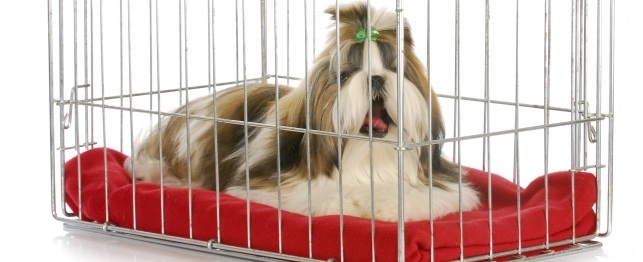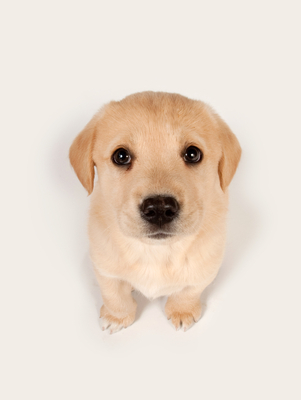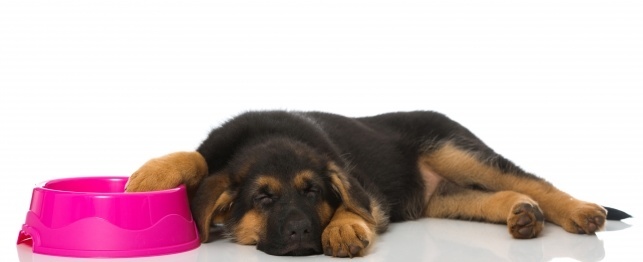

Dogs
If properly introduced and properly employed, your dog's crate can become its favorite resting place and retreat. Many owners erroneously assume that a crate is just something you have around during a puppy's first few weeks at home to assist with housebreaking. But crates are far more versatile and valuable than this and should really be a lifelong feature.
Dogs are den dwellers by nature and if you give away their crate once they're housetrained they will find other small spaces in which to sequester themselves when they feel like getting away from it all. Why deprive them of their original den and enforce them to hunker down under a coffee table instead? It just doesn't make sense.
If a crate has been rendered aversive to a pup by any one of the means listed above, he will not want to go inside it, will complain when confined, and may injure himself in frantic attempts to escape. In addition, a pup that is confined in a crate too long may be forced to urinate or defecate inside it. Once the sanctity of the crate is defiled in this way, it may no longer be a useful tool for housetraining. Pups can't tell you if you are doing something to them that they vehemently deplore, so instead they act out their grief. The behaviors we see in crate-aversive dogs are, to owners, crate-training problems. They are:
 Top 10 Dog Heart Murmur Symptoms
What i
Top 10 Dog Heart Murmur Symptoms
What i
 Puppy Socialization and the Risk of Disease
How to Safely Socialize Your Puppy
Puppy Socialization and the Risk of Disease
How to Safely Socialize Your Puppy
 Can Dogs Get Head Lice from Humans?
Can Dogs Get Head Lice from Humans?
Can Dogs Get Head Lice from Humans?
Can Dogs Get Head Lice from Humans?
 Picking the Right Food for Your Puppy
Picking the Right Food for Your Puppy
Picking the Right Food for Your Puppy
Picking the Right Food for Your Puppy
 Puppy Care Recommendations
Puppy Care Recommendations
Puppy Care Recommendations
Puppy Care Recommendations
Copyright © 2005-2016 Pet Information All Rights Reserved
Contact us: www162date@outlook.com